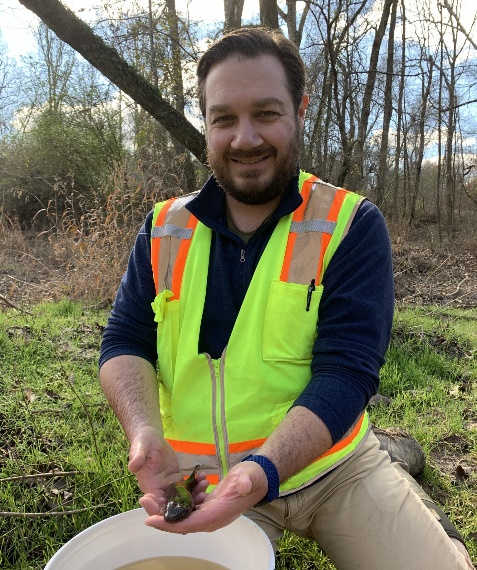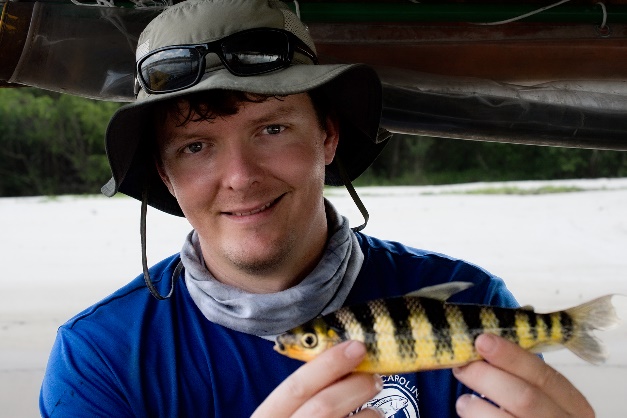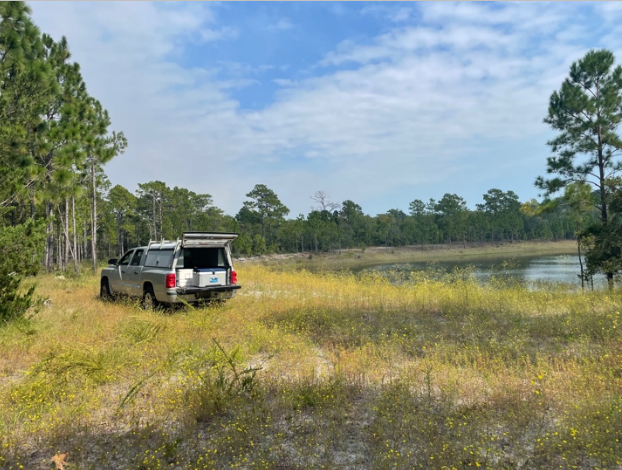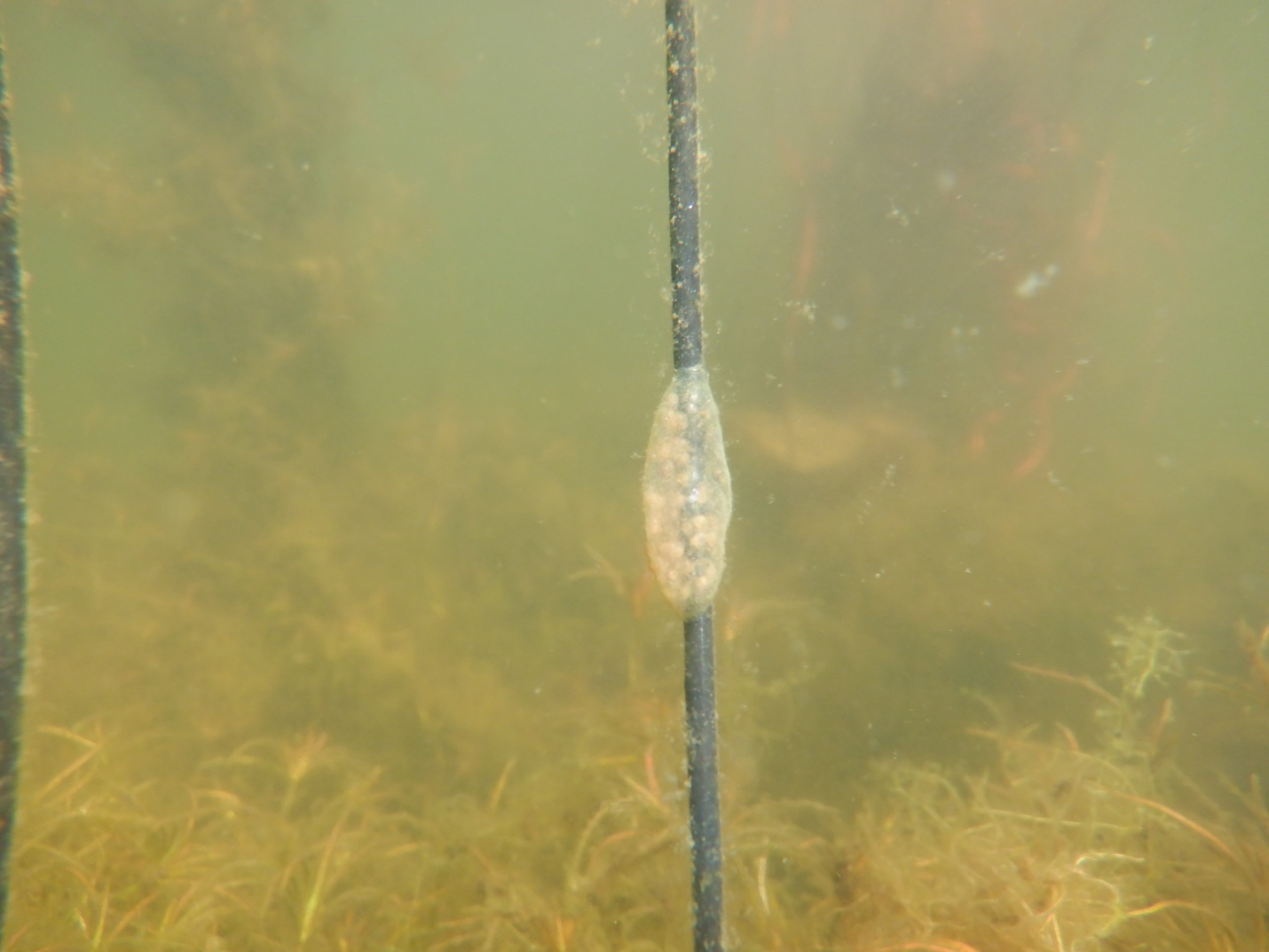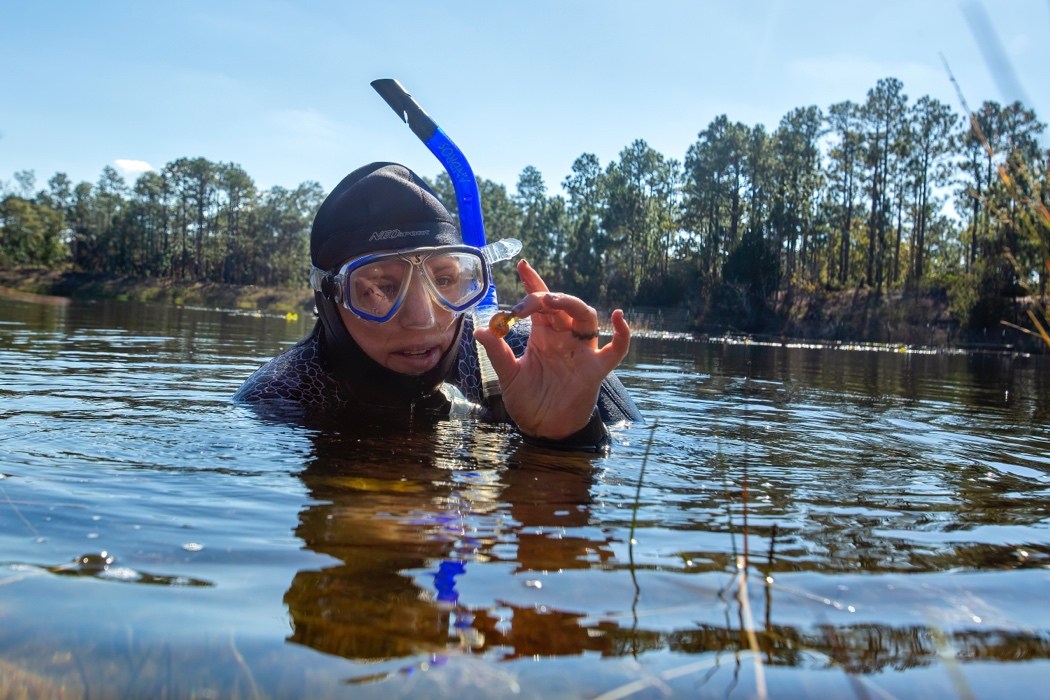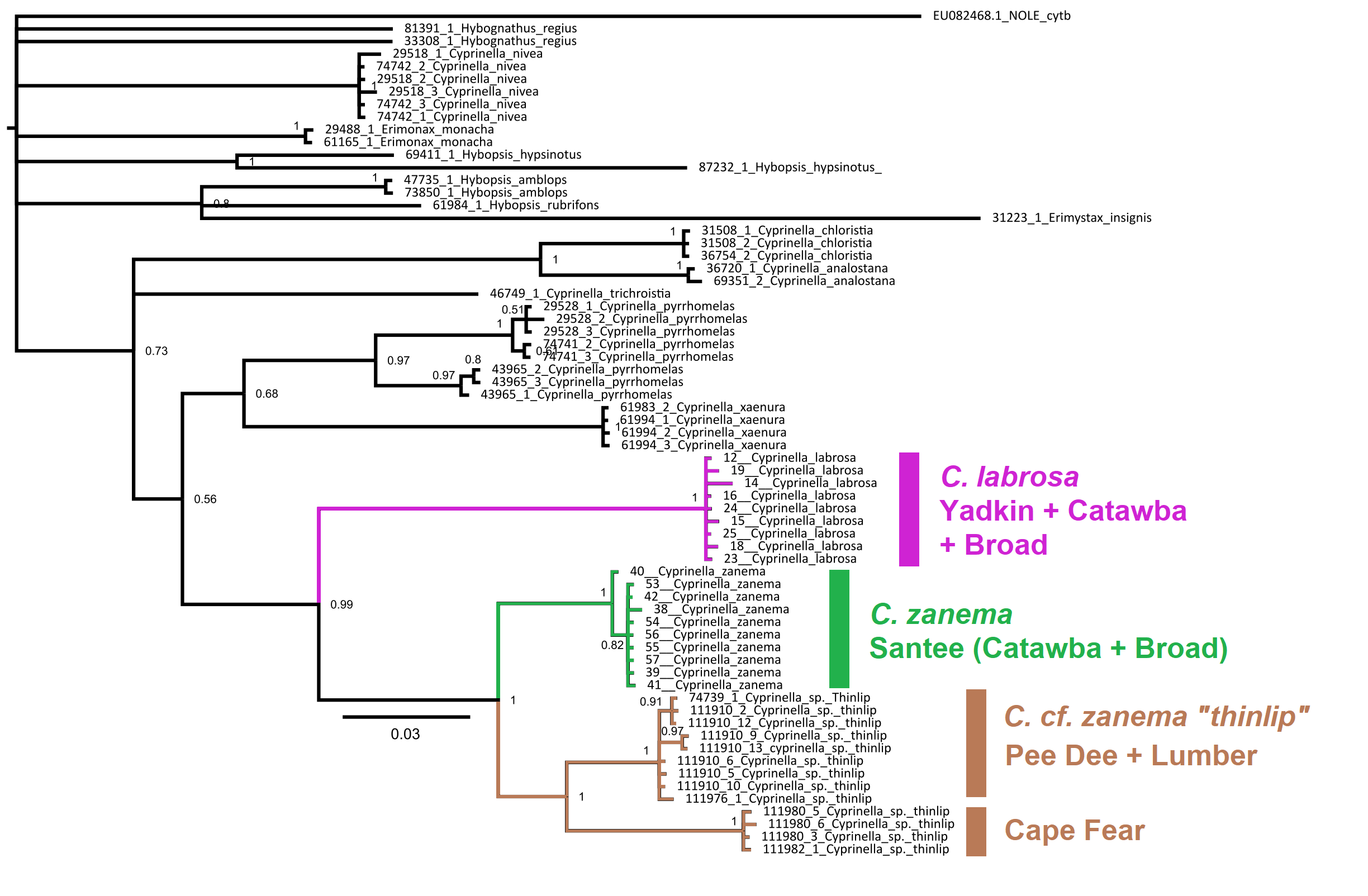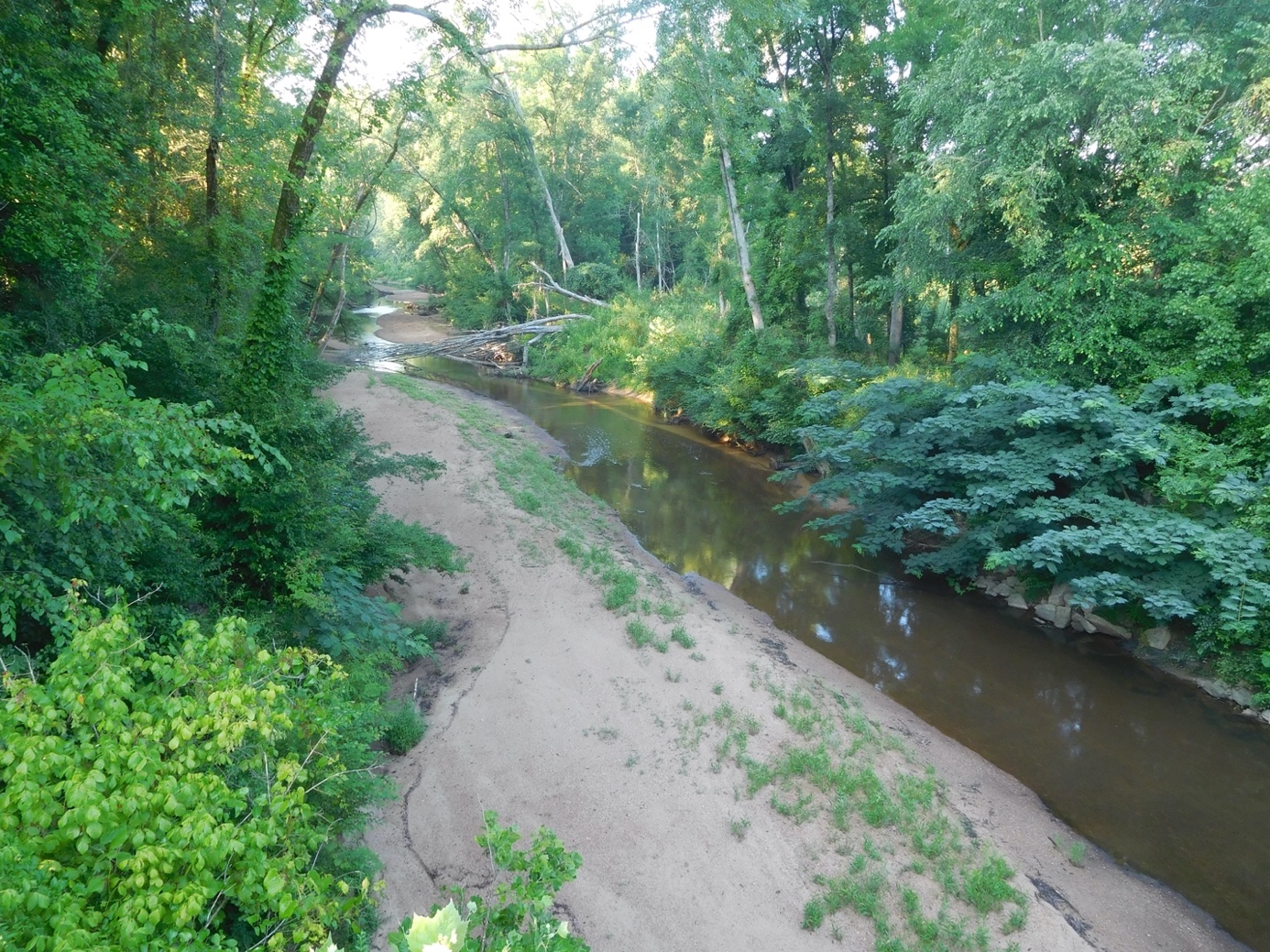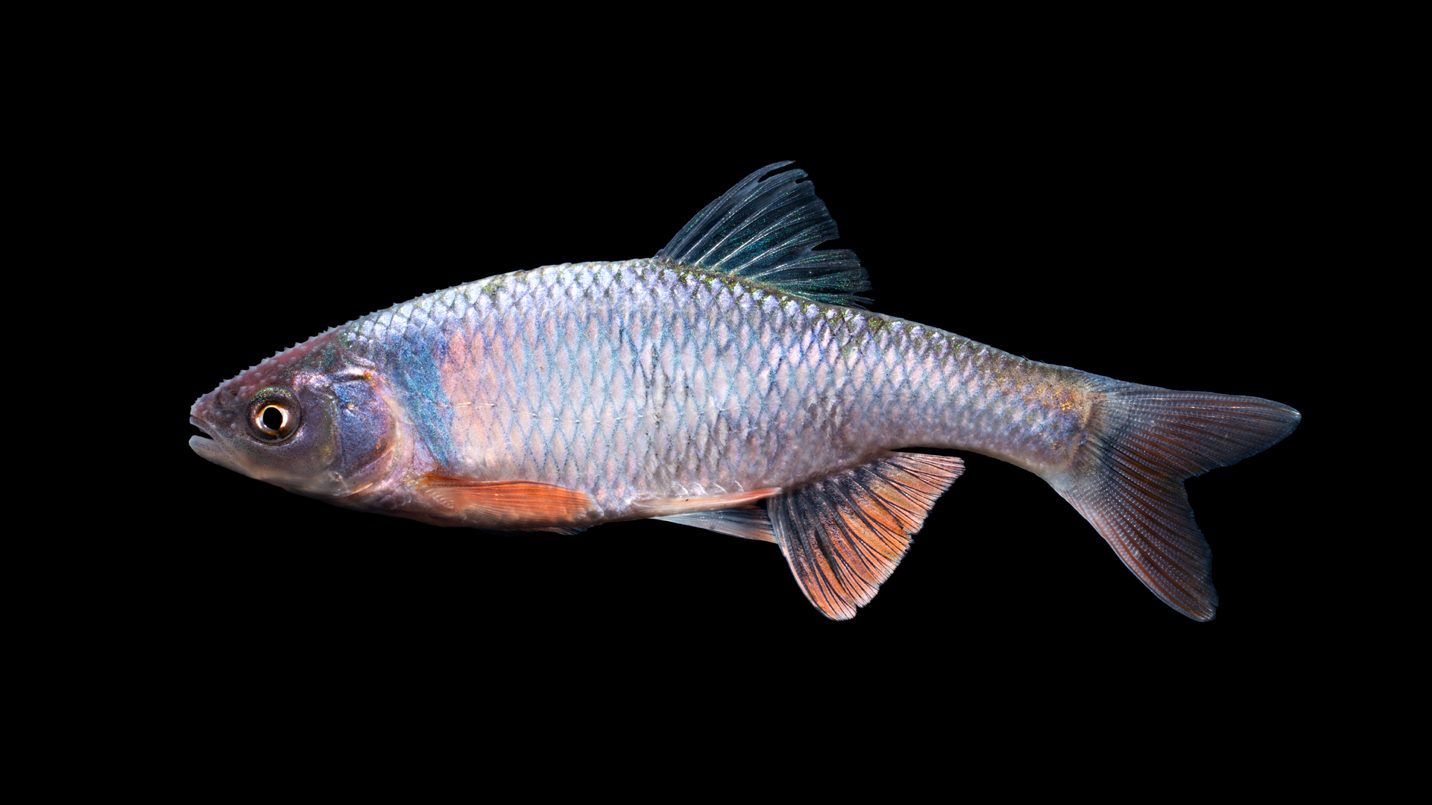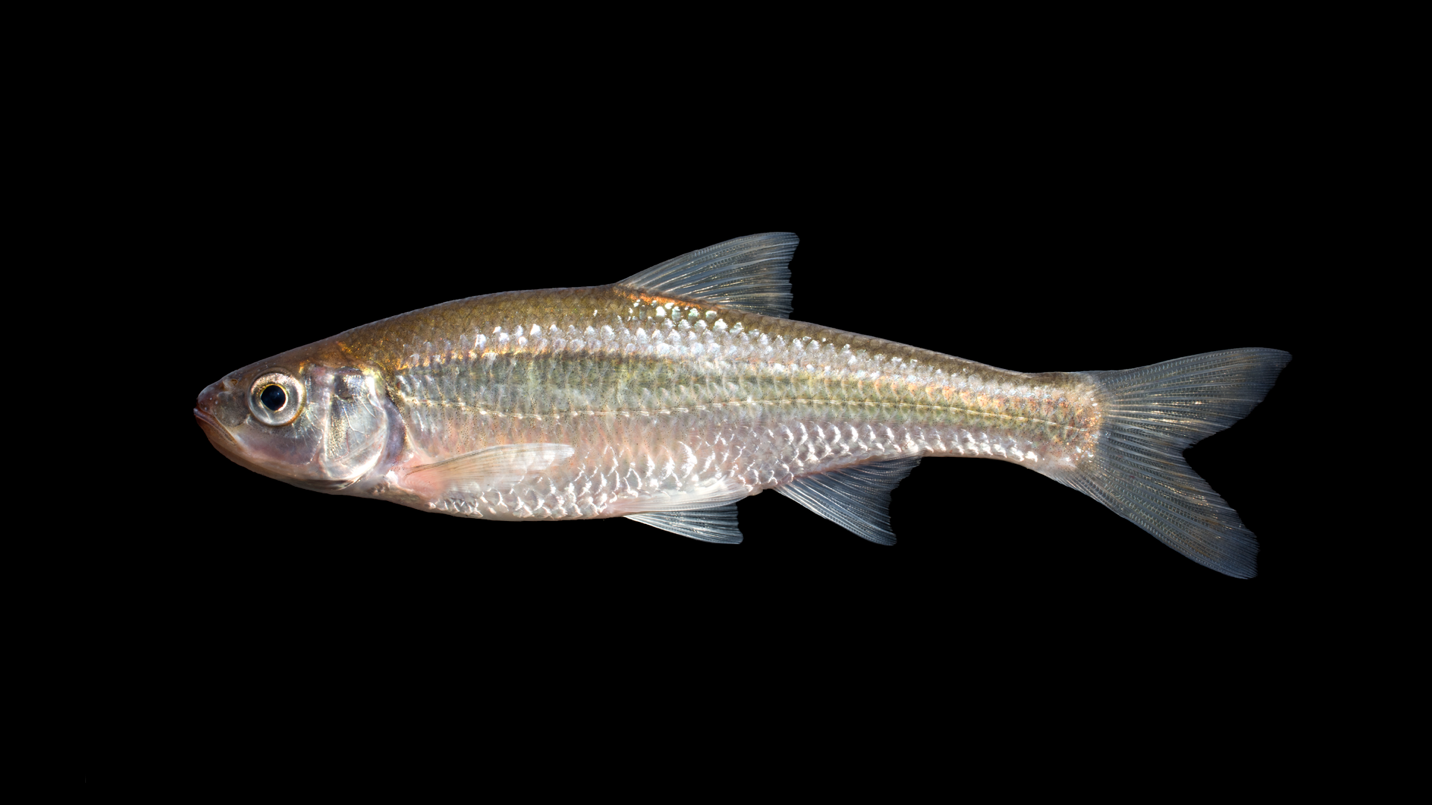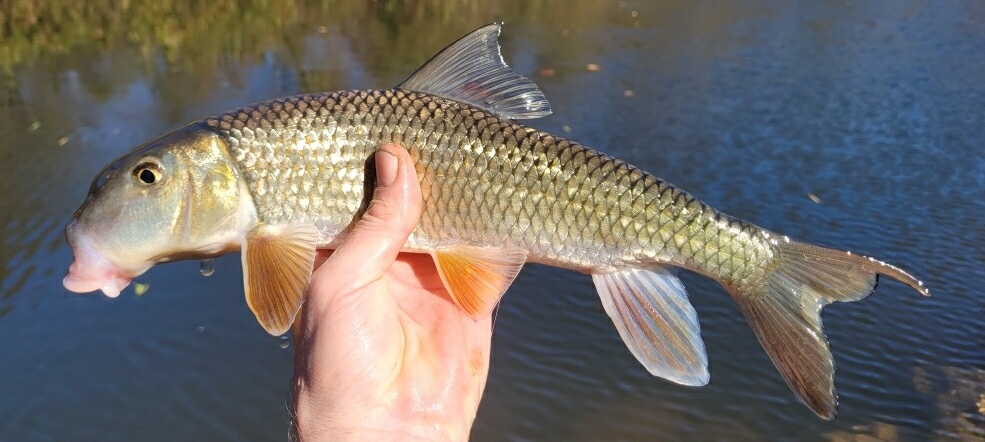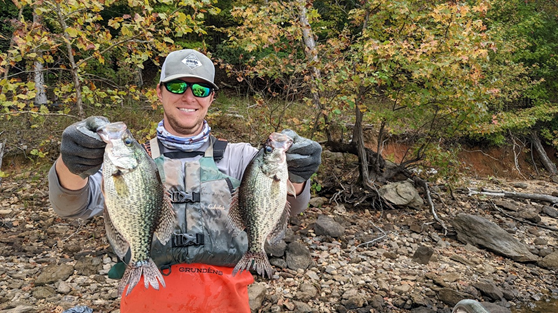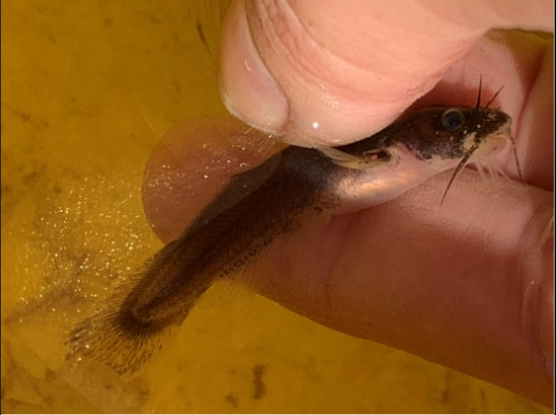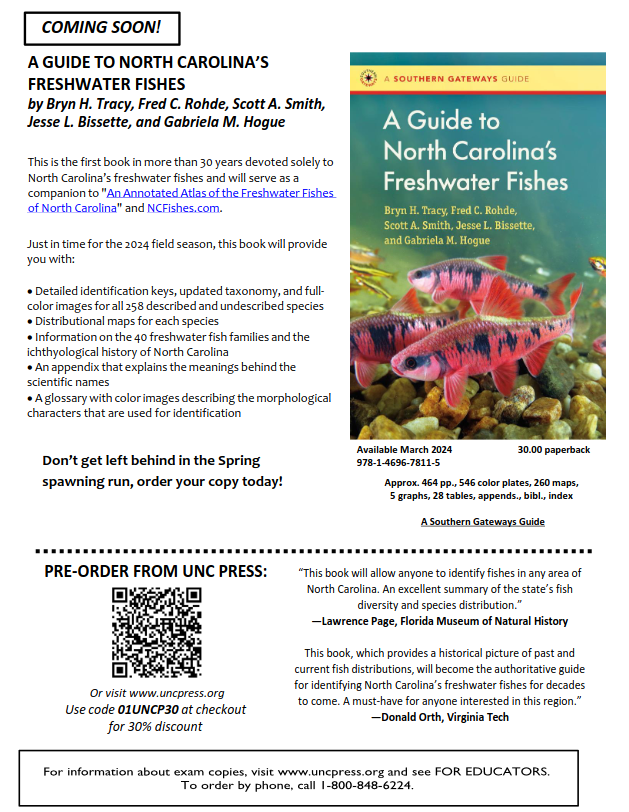Winter 2023 Newsletter

Quick Content Links
- President’s Message
- Treasurer’s Report
- NCAFS Annual Meeting
- 2024 NCAFS Officer Candidates
- Magnificent Ramshorn Restoration
- Update on the Scientific Description of Cyprinella sp. “Thinlip” Chub Project
- Autumnal Snipe Hunting for Red Shiner, Cyprinella lutrensis, in the Deep River at Carbonton
- A Leg-Up On The Future: Autumn Stockings Of Rare Species In The Piedmont
- Updates from the NC Wildlife Resources Commission
- SDAFS Technical Committees
- A Guide To North Carolina’s Freshwater Fishes
- Good Work! – Recent Publications by NCAFS Members
- Stories of Interest
- Call to Action!
- Valuable Links
President’s Message
Hi Everyone, I hope you have all had an enjoyable fall! First, thank you to Jess Baumann for submitting a guest president’s message while I was away on maternity leave. We welcomed baby Theodora in August and I have since returned to work with a greater appreciation for the community and opportunities that NCAFS provides. Many of the friends and colleagues I have made throughout my career have been fostered by NCAFS. While we may work with fish, mussels, crayfish, or generally organisms that don’t reciprocate conversation, it is the people we meet and the communities we form along the way that build our character and strengthen our science. Perhaps I’ve spent one too many days alone with a baby in the last three months, but I am feeling especially grateful for every one of you! And as the new year approaches, my excitement for this community to plan a SDAFS meeting grows. I am looking forward to seeing everyone in Sylva in February and hearing about all the amazing projects people are working on.
I hope everyone enjoys the holidays!
Kelsey
Submitted by Kelsey Roberts, NCAFS President
Treasurer’s Report
Balances as of January 3, 2023:
NCAFS Wells Fargo Checking Account: $2,605.42
Robust Redhorse Conservation Committee Fund: $3,356.67
Edward Jones Ichthus (Student) Fund: $30,342.37
Edward Jones General Fund: $68,877.26
It’s time to pay your dues! As a reminder, the ways dues can be paid are as follows:
- Online with your registration for the meeting.
- Online through our website anytime (online membership form here).
- Through AFS when you renew your AFS membership.
- Via mail by sending the membership form and a check or cash (preferably check) – mailing information provided by emailing Casey, or in person at the meeting via cash or check.
Please consider being a member of the parent society, this benefits our chapter greatly! For questions regarding finances, donations/awards, or procedures, please contact Casey Joubert at [email protected].
Hope to see you all in Sylva!
Casey
Submitted by Casey Joubert, NCAFS Secretary-Treasurer
NCAFS Annual Meeting
I am excited to invite you all to attend the 35th Annual NCAFS Meeting February 27-28, 2024 at the Clarion Pointe Inn in Sylva, NC! This meeting will be held in conjunction with the NC Mussel Freshwater Mollusk Workgroup, who will have their meeting the day after NCAFS on February 29, 2024. We are looking forward to seeing you all there and hearing about all the amazing work that is being done in North Carolina. For more information and updates about the meeting, including the new schedule of events, hotel lodging, and undergraduate travel award information, please visit our meeting website. We will be adding more information as planning progresses. The meeting agenda has changed, so I want to bring some attention to the changes (see below).
Tuesday, February 27
AM: Continuing Education Workshop: Getting Hired: How to Set Yourself Up for a Productive Career in Fisheries and Aquatics”
PM: Student Presentations
PM: Social at Innovation Station
Wednesday February 28
AM: Plenary Speaker
AM & PM: Contributed Papers
PM: Business Meeting
PM: Poster Session, Evening Banquet, Best Paper Awards, Jerry R. Finke & Fred A. Harris Service Awards, and universities’ student fisheries raffle
Thursday February 29
AM: Rise & Shine – Breakfast Seminar
AM: NC Mollusk Work Group
Submitting an Abstract
If you would like to present, please complete an Abstract Submission Form and email the form to Luke Etchison ([email protected]) and Bryn Tracy ([email protected]) with the subject line “NCAFS Meeting 2024 Abstract” by January 5, 2024 (this is the deadline for the first call for abstracts). Abstracts are limited to 300 words and should include clearly stated objectives, brief methods, general results, and conclusions. See attached call for abstracts for more information. Judges will be scoring all presentations for awards in both the professional and student categories. Please see our website for more information about awards or to view scoring criteria.
Lodging and Reservations
Please reserve your room before January 26th, 2024 to receive the room block rate of $89 a night. You may reserve your room by clicking the room block link below. If the link is not working, call the hotel directly at (828) 586-3315 and request a reservation through the “NCAFS Conference.”
NCAFS Annual Meeting Booking Link
If you have any questions about the meeting or submitting an abstract, please don’t hesitate to reach out to me.
Luke
Submitted by Luke Etchison, NCAFS President-Elect
2024 NCAFS Officer Candidates
The Nominations Committee is excited to present the ballot for 2024 NCAFS officers. We will elect a new President-Elect and a Secretary/Treasurer. There is only one candidate for Secretary/Treasurer, who will work in tandem in 2024 with our current Secretary/Treasurer, Casey Joubert, so that he can ease into the complicated financial acrobatics for the Southern Division meeting, which we’ll be hosting in 2025.
Take some time to read through the candidate bios and then vote via electronic ballot when it opens later in January 2024. An email will be sent to NCAFS membership once the ballot is open and REMEMBER!! You must be an NCAFS member in good standing (dues paid!) in order for your vote to count. In addition, all valid voters will be entered into a drawing to win a year of AFS membership, a $100 value. Results will be announced with much fanfare at the 2024 NCAFS business meeting on February 28. Many thanks to each candidate for offering to serve our chapter!
Tom Fox is a Senior Environmental Scientist with Dewberry Engineers. Tom leads the aquatic surveys group at Dewberry and is responsible for Endangered Species Act Consultation, permitting, jurisdictional determinations, and other natural resource related surveys. Prior to being an environmental consultant Tom worked for the Wildlife Resources Commission as the Eastern Region Aquatic Wildlife Diversity Biologist. He received a B.S. in Biology from George Washington University and an M.S. from North Carolina State University in Fisheries, Wildlife, and Conservation Biology. During his time at N.C. State, Tom’s research was focused on refining techniques for in vitro propagation of freshwater mussels.
Tom has been a member of NCAFS since 2009 and has regularly attended the annual meetings and volunteered to help in various capacities throughout the years. Tom hopes that his passion for aquatic ecology can bridge the gap between industry and conservation so that these critters and their ecosystems can be viewed as a valuable natural resource and not just a barrier to construction. In his free time Tom enjoys backpacking, playing new disc golf courses, and chasing around his toddler.
Scott Smith has spent the last 14 years in various biologist roles at the North Carolina Division of Marine Fisheries. Currently he is the Biological Database Administrator, where his primary duties include providing fisheries data access, management, development, and analytics. Scott studied Computer Science and Marine Biology at the University of North Carolina-Wilmington, completing his studies in 2006. He has completed post-graduate work in data science and statistics with a heavy concentration in R, SAS, and Python.
He is an avid photographer and has spent the last 10 years traveling the state to document and photograph every freshwater fish species known from North Carolina. This effort is part of a side project he started known as the Fishes of North Carolina, and you can see the fruits of this labor at www.ncfishes.com and in the upcoming A Guide to the Freshwater Fishes of North Carolina out March 2024.
When not in North Carolina, he also works on a project teasing out the taxonomy of Rivulid killifishes of Peru, and of course, taking their photos!
Mike Walter, Secretary-Treasurer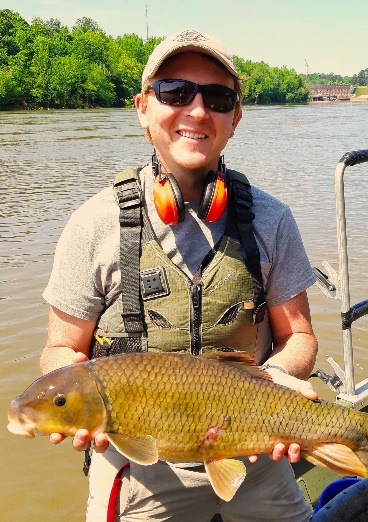
Mike Walter grew up in Chapel Hill, NC and developed his love of small streams while playing in the creek behind his parents’ house. Following high school, Mike earned his Bachelor’s degree in 2010 from Appalachian State University where he studied Environmental Ecology and played in the beautiful mountains surrounding Boone. In 2013, he began to work in Fisheries Biology as a technician for North Carolina State University and hasn’t stopped since. 7 years and 8 technician positions later, he graduated with his Master’s degree in Fisheries and Wildlife Conservation Biology from North Carolina State University under the advisement of Dr. Jay Levine. Upon graduation, Mike accepted a position at the North Carolina Wildlife Resources Commission working in the Eastern Region of the Aquatic Wildlife Diversity program and is currently a Conservation Biologist in the region working to conserve freshwater mussels, crayfish and non-game fish. On December 1, 2023, Mike and his partner Bri welcomed their first child, Layla, into the world. In his free time, Mike can usually be found on one of his many bicycles in the woods around his house in Hillsborough, NC.
Submitted by Andrea Leslie, NCAFS Past-President
Magnificent Ramshorn Restoration
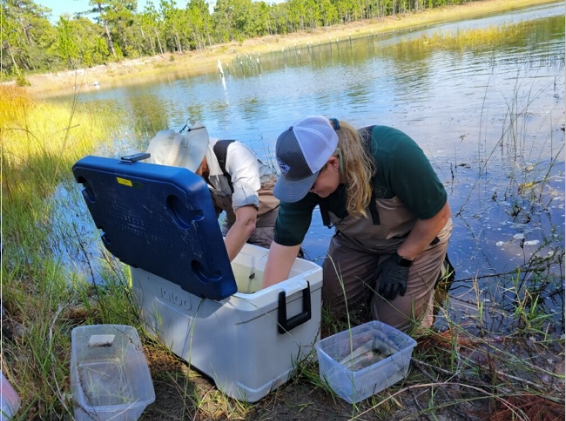
Emilia Omerberg (R) and Brena Jones (L) transfer snails out of a cooler for release. Photo by Jennifer Archambault, USFWS.
The Magnificent Ramshorn, Planorbella magnifica, is a native aquatic snail endemic to the lower Cape Fear River basin in North Carolina. The snail has been extirpated from the wild since 2004 primarily due to habitat degradation, including stormwater pollution caused by intense urbanization in the Wilmington area. The snail has been living in captivity for over 20 years but finally crawled its first steps back out into the wild during an NCWRC stocking event on October 4th 2023!
The snails rode along for the almost 6 hour drive from the NCWRC’s Conservation Aquaculture Center in Marion, arriving at the pond in Brunswick County in early afternoon. They stopped about halfway for a water change so they could arrive in the best possible condition. When they arrived, we began tempering the snails to the local water, gradually adding more pond water to the coolers. The water temperature in the hatchery had been increased slowly over the previous month or so to mimic the pond temperature and reduce the need for extended tempering pond-side. It also helped that the pH and specific conductivity of the two water sources were quite similar.
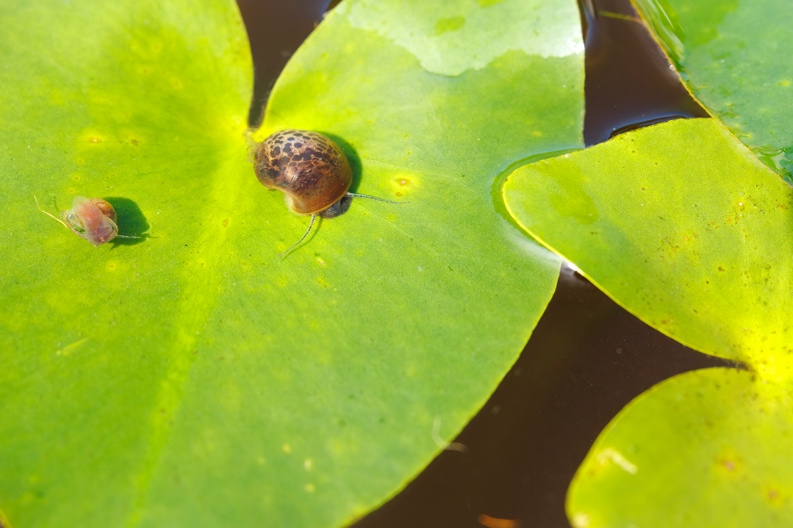
Magnificent Ramshorn snails orient themselves to their new pond home. Photo by Jonathon Gruenke, NCWRC.
The pond in Brunswick County has been patiently awaiting its new residents for over 5 years. Much work has gone into the pond to make it suitable for the snails. First, we altered the incline of the northern bank and added material to the pond bottom on that end to create additional shallow habitat that snail-hosting plants seem to prefer. Then we added agricultural lime to increase water and soil alkalinity, which upon initial testing was zero; this will help buffer pH levels. The pond also received two rounds of planting of native aquatic vegetation, consisting of spatterdock and white-water lily, to provide additional food and structure for the snail to lay eggs on and take cover in. We also electrofished the pond to assess the fish community and found no piscine predators for the snails at that time.
All 860 of the snails released on October 4th were tagged with honeybee tags to help us identify this initial cohort of individuals.
For many involved this has been a project long in the making. NCWRC Aquatic Wildlife Diversity Coordinator Brena Jones reminisced pond-side with Andy Wood of the Coastal Plain Conservation Group about when they first met and surveyed for snails together almost 15 years ago. Andy, who received a grant from NCAFS last year to improve his Magnificent Ramshorn breeding facility, has been working to conserve and propagate this species for over three decades. He received the Chapter’s Harris Conservation Award in 2016 for his work with this species.
The federally listed Magnificent Ramshorn snail also makes history by being the first creature in North Carolina to make use of a new programmatic Safe Harbor Agreement between the NCWRC and the US Fish & Wildlife Service that provides a legal framework of assurances for non-federal landowners as an incentive to host endangered species on their property. In this case, it was an especially straightforward process since the pond is owned by NCWRC.
The snail’s initial response to the pond environment was positive: they began exploring the native aquatic vegetation and pond bottom quickly! Monitoring began in earnest the following week.
We were able to find both snails and freshly laid eggs on plant exclosures and on the underside of leaves.
In subsequent weeks more adult snails were located and eggs developed. On October 25th the first wild hatches of the Magnificent Ramshorn snail in over 20 years were recorded!
Following these successes, we went ahead with a second stocking event on November 16th. Another 2,000 snails were released into the same pond. Monitoring continues and the snails appear healthy and happy. They will shift into dormancy as water temperatures decrease and we are hopeful that they will overwinter well and continue to make good use of their new home come springtime.
The NCWRC offers many thanks to all the partners who have been part of the process including hatchery & Land/Water Access staff, Andy Wood (Coastal Plain Conservation Group), US Fish & Wildlife Service, NC State University, SOLitude Lake Management, NCAFS, and US Military Ocean Terminal at Sunny Point, among others. We also thank the National Fish & Wildlife Foundation for the grant which is currently funding the NCWRC’s Magnificent Ramshorn work.
Submitted by Emilia Omerberg and Brena Jones
Update on the Scientific Description of Cyprinella sp. “Thinlip” Chub Project

“Thinlip” Chub from the Lumber River at Fair Bluff, Columbus-Robeson counties, NC. Photograph by Scott A. Smith.
Chapter members, Bryn H. Tracy, Fred C. (Fritz) Rohde, Michael A. Perkins, Laura M. Lee, Kara B. Carlson, Brena K. Jones, Madelyn G. McCutcheon, and Heather K. Evans, are grateful to receive another research grant from NC AFS for laboratory supplies for genetic analyses as part of their project on the scientific description of Cyprinella sp. “Thinlip” Chub.
The Team’s initial 2022 grant from NC AFS enabled the sequencing of two nuclear and one mitochondrial genes from 14 species. Preliminary results showed Cyprinella sp. “Thinlip” Chub was a distinctive species, but upon further data analyses, it was decided that additional data would be necessary for more definitive conclusions regarding the new species’ distinctiveness. Under the guidance of NCWRC’s genomics laboratory staff, Kara Carlson and Heather Evans, the 2023 grant will enable them to sequence another mitochondrial gene and analyze additional genetic samples to obtain better resolution of the differences between and amongst the several species within the genus Cyprinella.
While the genetics laboratory work has progressed, additional survey work was conducted during the Summer and Fall 2023. Not knowing what they were thinking, Justin Dycus (Duke Energy) and Bryn Tracy surveyed lower Jones Creek in Anson County in mid-July in search of specimens. Specimens were last collected from this creek by Fritz in 2001. Unfortunately, they came up empty handed. In the process, they almost suffered heat prostration and deliriousness while wearing chest waders in very humid and hot conditions, typical for summers in North Carolina. Duh.
Later in August under more favorable temperatures and not needing to wear waders, Fritz, Scott, and Bryn re-visited the Black River at Ivanhoe in Sampson County to collect and photograph possible type specimens. Here, they were successful in collecting nine male and female specimens.
In late September, Justin Dycus, Casey Joubert (NCWRC), and Bryn Tracy returned to Anson County to survey Mill Creek near Buchannon Shoals and again at Jones Creek in another desperate attempt to find specimens. Not quite reaching the creek’s confluence with the Pee Dee River, they trudged back upstream in the streambed for over 1.5 hours once again wearing chest waders back to their vehicles. Along the way, they were once more reminded of the joys of doing stream work in the heat of early Fall. Although Mill Creek and Jones Creek still supported the diverse fish communities one would expect from a lower Piedmont stream, “Thinlip” Chub appears to have been extirpated from this HUC 8.
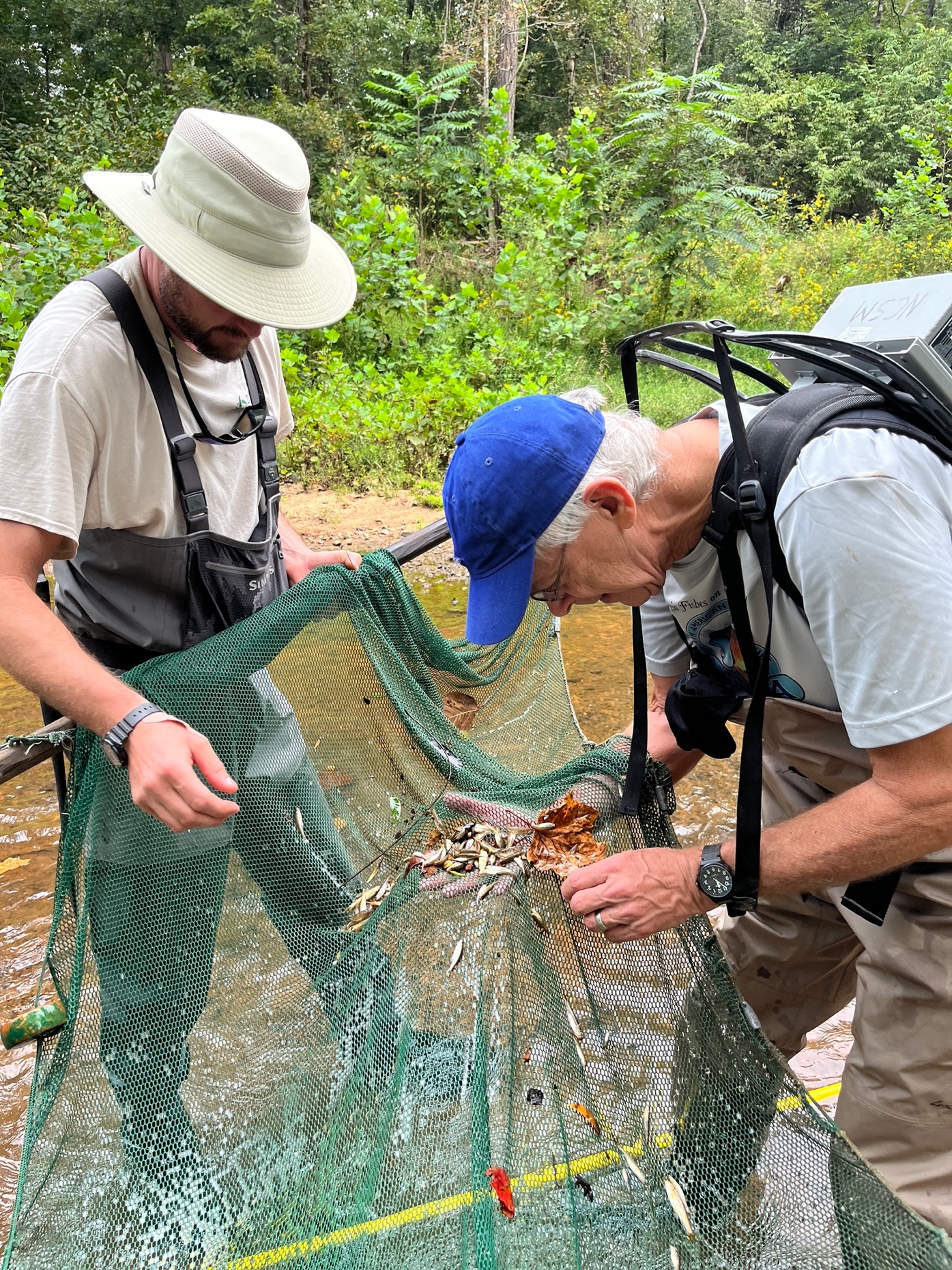
Every species you’d expect to find, except the one you really wanted. Justin Dycus (l) and Bryn Tracy (r). Photo by Casey Joubert.
Ending the field season on a positive note, Scott Smith and Jesse Bissette visited the North Carolina Museum of Natural Sciences’ Fish Laboratory to photograph journal-quality images of the possible type specimens from the Black River.
To wrap things up, in addition to the two presentations at the Chapter’s February meeting, two additional “Thinlip” Chub talks were given at the annual meetings of the North American Native Fishes Association (March) and the Southeastern Fishes Council (November). At each conference, the Chapter’s financial contributions were acknowledged for the two research grants bestowed upon us.
Contributed by Bryn H. Tracy
Autumnal Snipe Hunting for Red Shiner, Cyprinella lutrensis, in the Deep River at Carbonton
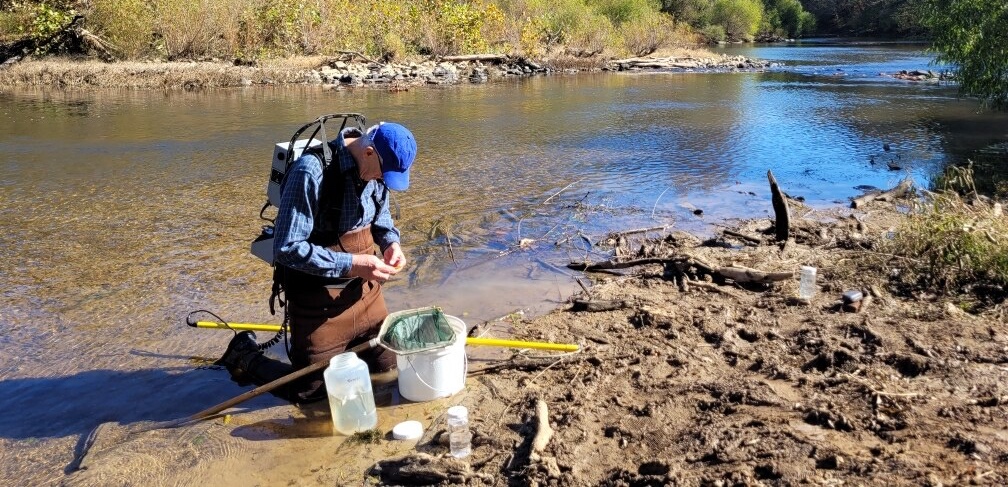
Bryn Tracy sorting the catch along the banks of the Deep River at Carbonton. Photograph by Tim Aldridge.
In late October, a report of Red Shiner, Cyprinella lutrensis, congregating in the shallows of the Deep River at Carbonton, Chatham-Lee counties, was received by Fritz Rohde from Tim Aldridge. The nonindigenous Red Shiner has been found at more than 40 localities in the Yadkin River basin from Wilkes to Richmond and Anson counties; at a cluster of sites in Guilford County in the upper Cape Fear basin; and at several sites in the Roanoke River basin in Stokes, Caswell, and Person counties, but never in the Deep River system (Tracy et al. 2020).
Upon their review of an image of what might be Red Shiner, Tim Aldridge and Bryn Tracy decided in early November to venture out to the Deep River to verify or debunk this invasive species presence. While Tim microfished, Bryn backpack electrofished the riffles, shoals, and shallow pools at the old dam and powerhouse site. Failing to replicate the presence of Red Shiner, together they were successful in documenting 17 indigenous species including Moxostoma sp. “Brassy” Jumprock and V-lip Redhorse, M. pappillosum (via micofishing), and American Eel, Anguilla rostrata, Cape Fear Shiner, Miniellus mekistocholas, and an abundance of White Shiner, Luxilus albeolus, which might have been mistakenly thought to be a Red Shiner by the fisherman in the first place. Under extremely low-flow conditions at that time, they also observed a nuisance amount of Hydrilla which had been first documented in this part of the Deep River in 2015 (Rob Emens, NC DWR, pers. comm.).
They were relieved that Red Shiner was not found. But, should a Chapter member encounter any here-to-fore undocumented nonindigenous fish species in North Carolina, please submit your observation along with all the pertinent locality data to: https://survey123.arcgis.com/share/710337fbf02140599fd788ebfdd72744.
Contributed by Bryn H. Tracy
A Leg-Up On The Future: Autumn Stockings Of Rare Species In The Piedmont
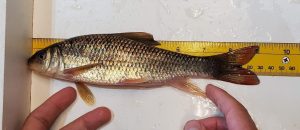
An eighteen-month-old Phase II Robust Redhorse. Photo by Carson Pope.
The NCWRC’s Aquatic Wildlife Diversity Program (AWD) and its partners in the Central Region released two species of rare fish into the wild this fall. The first group was a mixed batch of juvenile Robust Redhorse, Moxostoma robustum, that were produced at the NCWRC’s McKinney Lake State Fish Hatchery. This consisted of over 8,700 six-month-olds (Phase I) who were spawned in the spring of 2023 from broodfish collected in the Pee Dee River near Rockingham, NC. These Phase I fish were already equipped with built-in tags of their own, as we use genetic tools to analyze fin clips taken from them during future captures to identify their origins.
However, we also had 796 eighteen-month-olds (Phase II) who had been busy growing into their robust name since they were spawned in the spring of 2022. These fish were large enough to be fitted with full-sized PIT tags, so we convened a Halloween gathering of staff and students from a suite of partners, including NCWRC, NC Museum of Natural Sciences, Duke Energy, and NC State University. Although we ended up having more fish than tags, all but 87 of them got bejeweled and then were released with their younger cousins at the Hwy 74 boat ramp the next day.
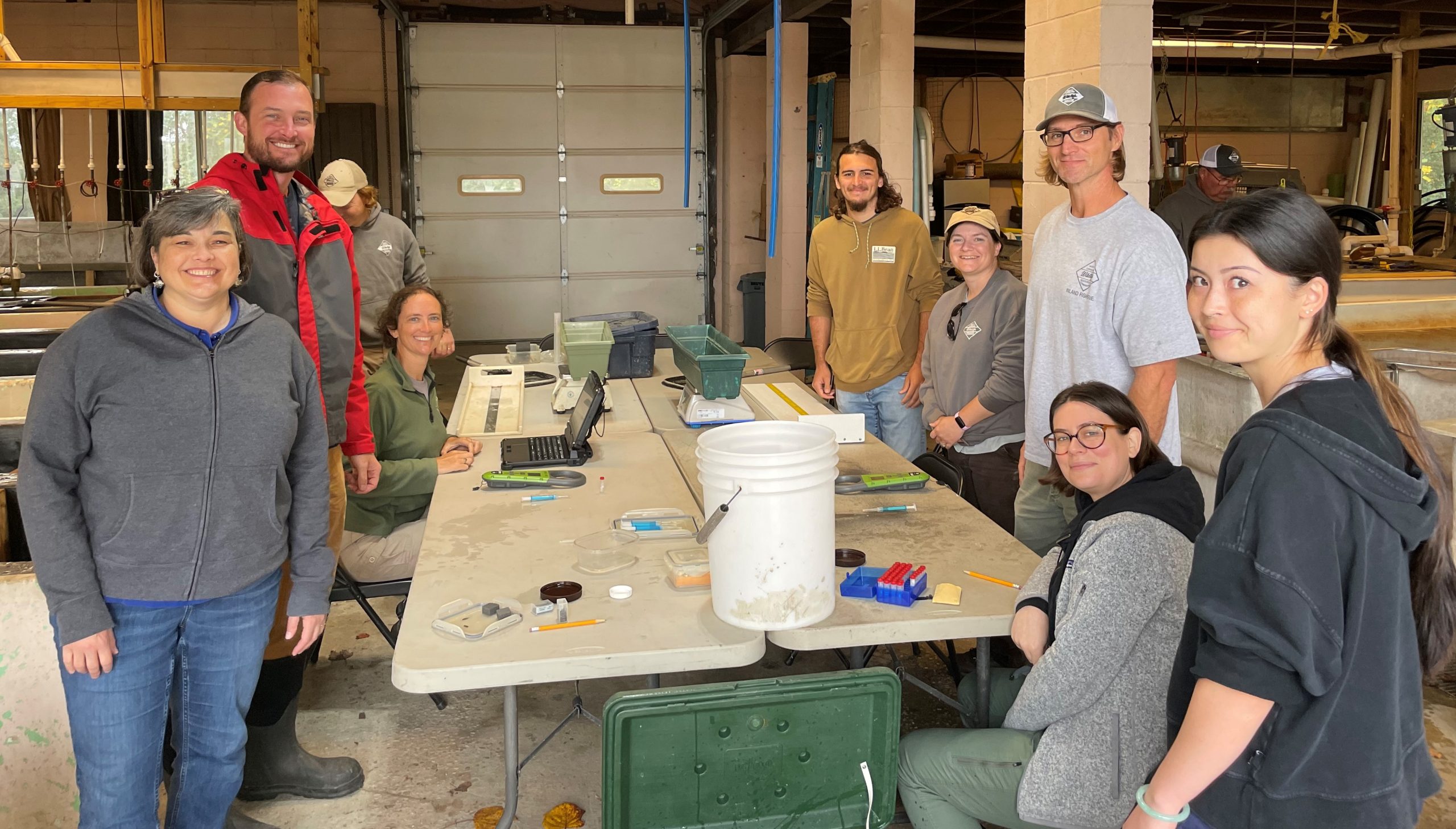
Some of the RRH tagging crew on October 31, 2023. Photo by Emilia Omerberg.
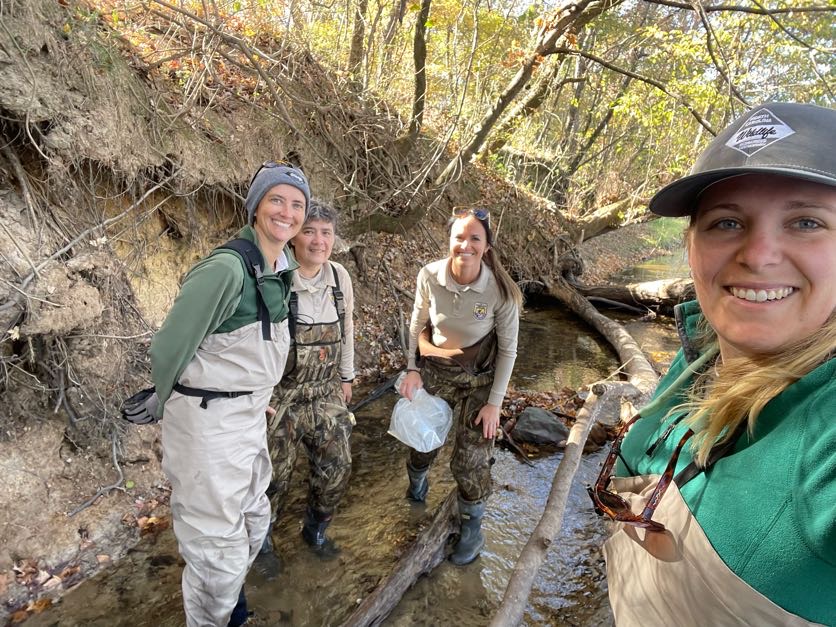
The 2023 Shiner Stocking Crew: (L-R) Brena Jones, Sonia Mumford, Brandi Symons, Emilia Omerberg. Photo by Emilia Omerberg.
It will take several years for these fish to recruit to any spring sampling that might be occurring at that time: we rarely see Robust Redhorse until they are about three or, more commonly, four years of age, when males begin to sexually mature (females generally mature later, around five to six). But we have had successful returns from previous stockings so we are hopeful that we have once again given this population a boost in the juvenile survival department. This augmentation effort saw its first stocking in 2014 and 2023 represented the eighth year-class released into the river; this was our largest release group since 2015. Special thanks are due to the NCWRC McKinney Hatchery Staff, both for raising a “robust” crop this year and for doing the fish wrangling and releasing!
Later in that same week in early November, Central AWD met staff from the USFWS Edenton National Fish Hatchery to release nearly 1,000 Cape Fear Shiners, Notropis mekistocholas, into the upper Cape Fear River. These youngsters were spawned and reared in aquaria at Edenton from 90 broodfish collected from the Deep River in the spring of 2023 (shared with NCAFS here). The broodfish were returned home to their capture locale earlier in the fall. The juveniles were released at shoals located near Erwin and Lillington, NC and represented the second year-class stocked into the Cape Fear, with the goal of augmenting the population in that river (the first stocking was shared here). The 2023 batch was nearly twice as numerous as the previous year, as propagation and rearing techniques continue to be refined.
These tiny young shiners seemed even smaller as they braved their first wiggling swims into the broad, icy-cold expanse of the 100-meter-wide river channel. In 2024, monitoring will begin to investigate whether they were strong and clever enough to survive this big, new, complex world, and whether the biologists can be clever enough to find them again in said world. Time will tell if they succeed and if we get to see increased capture rates of these lovely gems in our future sampling, as propagation and stocking continues.
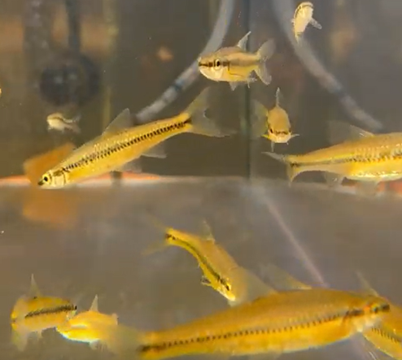
Adult Cape Fear Shiners in breeding colors. Image capture from video by Sonia Mumford.
Submitted by Brena Jones
Updates from the NC Wildlife Resources Commission
District 3 Crappie Surveys
During October 2023, District 3 fisheries staff sampled crappie populations with trap nets at Tar River Reservoir, Shearon Harris Reservoir (Harris Lake), and Lake Gaston. There was almost a 50/50 mix of White Crappie, Pomoxis annularis, and Black Crappie, P. nigromaculatus, at Tar River Reservoir whereas only Black Crappie were sampled at Harris Lake and Lake Gaston. Initial data analysis showed catch rates were highest for Harris Lake and Tar River Reservoir and lowest for Lake Gaston, yet still close to average for North Carolina Piedmont reservoirs. Lake Gaston and Tar River Reservoir had similar size distributions; approximately 50% of the fish sampled were greater than eight inches and approximately 25% were greater than ten inches. Harris Lake had larger fish overall with approximately 90% of fish sampled greater than eight inches and approximately 60% greater than ten inches. The largest fish that was collected was approximately 15 inches and 1.5 pounds from Tar River Reservoir. Most fish sampled in all three reservoirs were in good condition with healthy weights for their respective lengths.
NCWRC Biologists Collect Rare Fish Species
On November 6, 2023, WRC Inland Fisheries Biologists April Pope and Jeremy McCargo were sampling Lake Waccamaw and encountered a welcome sight – a Broadtail Madtom (Noturus sp. “Lake Waccamaw Broadtail” Madtom). This rare fish was collected during a boat electrofishing survey. Broadtail Madtom are an undescribed species of catfish. There have only been a handful of collections at Lake Waccamaw in the past two decades. Survival of this tiny species of catfish is threatened by predation by invasive catfish, including Flathead Catfish and Blue Catfish, and habitat loss. WRC Aquatic Diversity Biologists have built and deployed “Madtom Motels” in Lake Waccamaw and other areas to provide cover for Broadtail Madtoms that can be readily monitored. AWD Biologists continue to sample Broadtail Madtoms and have successfully found individuals in the Lumber River Basin using kick seines and D4 Fisheries Biologists found another individual in the Lumber River in 2022 using boat electrofishing. The presence of invasive catfish has likely eliminated Broadtail Madtoms from the Cape Fear River.
Brook Trout Genetics and Restoration
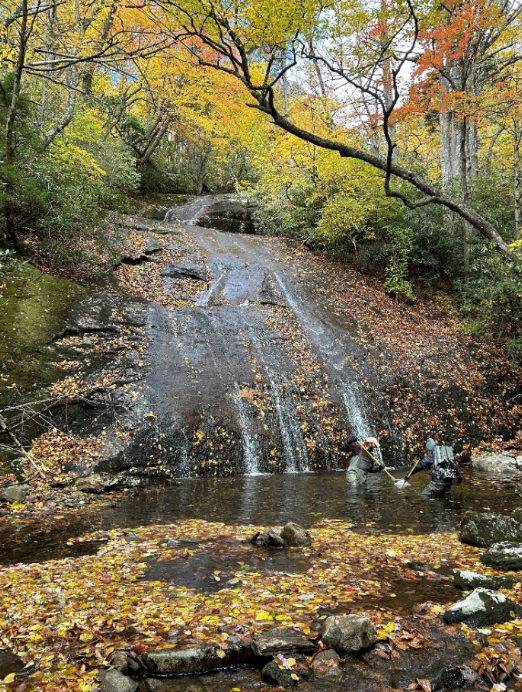 The NCWRC continues its efforts to document the distribution of wild, self-sustaining Brook Trout, Brown Trout, and Rainbow Trout (Salvelinus fontinalis, Salmo trutta, and Oncorhynchus mykiss, respectively) populations across North Carolina’s mountains. Although efforts are made to assess all trout species, considerable attention is given to our state’s only native trout: Brook Trout. Because of the vast scope of the project and remote nature of the work, the NCWRC has utilized temporary Wildlife Conservation Technicians (Maggie Coffey and Raymond Starmack) to focus on assessing the distribution of trout (primarily Brook Trout) and the collection of Brook Trout genetic material. During 2023, 149 surveys were conducted on 44 streams across 12 counties and six major river basins, genetic tissue were collected from 32 Brook Trout populations, and two previously unknown Brook Trout populations were discovered. One of these unknown populations was within the Hiwassee River Basin, which was a geographic area of focus in 2023 (19 surveys completed). The Brook Trout Crew’s work this year has supported numerous conservation partners (e.g., United States Forest Service, Trout Unlimited, North Carolina Land and Water Fund, North Carolina Natural Heritage Program, Eastern Brook Trout Joint Venture, and the land trust community). Additional activities included the removals of hatchery Brook Trout stocked illegally in three headwater streams within the North Fork French Broad River watershed, assistance with trout population dynamics research, collection of gill lice specimens for collaborative research efforts, support of ongoing habitat improvement projects in Catheys and Chastine creeks, documentation of stream habitat needs, evaluation of waters for the restoration of native Brook Trout populations, and continued assessment of Tropical Storm Fred impacts.
The NCWRC continues its efforts to document the distribution of wild, self-sustaining Brook Trout, Brown Trout, and Rainbow Trout (Salvelinus fontinalis, Salmo trutta, and Oncorhynchus mykiss, respectively) populations across North Carolina’s mountains. Although efforts are made to assess all trout species, considerable attention is given to our state’s only native trout: Brook Trout. Because of the vast scope of the project and remote nature of the work, the NCWRC has utilized temporary Wildlife Conservation Technicians (Maggie Coffey and Raymond Starmack) to focus on assessing the distribution of trout (primarily Brook Trout) and the collection of Brook Trout genetic material. During 2023, 149 surveys were conducted on 44 streams across 12 counties and six major river basins, genetic tissue were collected from 32 Brook Trout populations, and two previously unknown Brook Trout populations were discovered. One of these unknown populations was within the Hiwassee River Basin, which was a geographic area of focus in 2023 (19 surveys completed). The Brook Trout Crew’s work this year has supported numerous conservation partners (e.g., United States Forest Service, Trout Unlimited, North Carolina Land and Water Fund, North Carolina Natural Heritage Program, Eastern Brook Trout Joint Venture, and the land trust community). Additional activities included the removals of hatchery Brook Trout stocked illegally in three headwater streams within the North Fork French Broad River watershed, assistance with trout population dynamics research, collection of gill lice specimens for collaborative research efforts, support of ongoing habitat improvement projects in Catheys and Chastine creeks, documentation of stream habitat needs, evaluation of waters for the restoration of native Brook Trout populations, and continued assessment of Tropical Storm Fred impacts.
Delayed Harvest Trout Stocking
Staff at Bobby N. Setzer, Armstrong, and Table Rock state fish hatcheries completed stocking trout into Delayed Harvest Trout Waters. A total of 151,569 were stocked into 34 waterbodies during October and November. The stocking schedule is available on the Commission’s website.
Winter Trout Stocking
Between November 29 and December 21, staff at the Bobby N. Setzer and Armstrong state fish hatcheries will stock more than 67,000 trout into 44 small lakes and ponds in the mountain and piedmont regions. The list of locations and stocking dates can be found on the Commission’s website.
Submitted by Corey Oakley
SDAFS Technical Committees
The Southern Division of the American Fisheries Society conducts much of its work through technical committees. A primary function of these committees is to disseminate information throughout the division, and committees frequently sponsor symposia, compile proceedings, and work towards broader research and management initiatives throughout the region. The committees are comprised of at least one representative from each state with representatives appointed by the state agency fisheries chief (but anyone is welcome to attend the committee meetings!).
If you would like to share information about your project with one of the committees, please contact the technical committee representative listed below who best aligns with your project.
Aquaculture – David Deaton ([email protected])
Catfish Mangement – TD VanMiddlesworth ([email protected])
Morone – Kelsey Roberts ([email protected])
Pollution – Ben Ricks ([email protected])
Reservoirs – Casey Joubert ([email protected])
Small Impoundments – David Belkoski ([email protected])
Trout – Jake Rash ([email protected])
Warmwater Streams – Kyle Rachels ([email protected])
Submitted by the NCAFS Newsletter Review Team
A Guide To North Carolina’s Freshwater Fishes
Submitted by Gabriela Hogue
Good Work! – Recent Publications by NCAFS Members
Mallik, R., K. B. Carlson, D. J. Wcisel, J. M. Fisk III, J. A. Yoder, and A. Dornburg. 2023. A chromosome-level genome assembly of longnose gar Lepisosteus osseus. G3 Genes|Genomes|Genetics 13(7):1-8.
McIver, J. K., W. G. Cope, R. B. Bringolf, T. J. Kwak, B. Watson, A. Maynard, and R. Mair. 2023. Assessing the toxicity of sea salt to early life stages of freshwater mussels: implications for sea level rise in coastal rivers. Environmental Toxicology and Chemistry 42(11): 2478-2489.
Rohde, F., B. H. Tracy, and M. Fisk. 2023. Distribution of American Brook Lamprey, Lethenteron appendix in North Carolina. American Currents 48(4):22-24.
Tracy, B. H. 2023. My memories of Dr. Robert E. Jenkins. American Currents. 48 (4):5-6.
Waller, D., S. Pucherelli, M. Barbour, A. Dahlberg, M. Meulemans, S. Tank, D. C. Aldridge, R. Claudi, W. G. Cope, P. L. Gillis, D. Kashian, D. Mayer, K. Stockton-Fiti, and W. H. Wong. 2023. Review and development of best practices for toxicity tests with Dreissenid mussels. Environmental Toxicology and Chemistry 42(8):1649-1666.
Wheeler, A. P., K. T. Rachels, and K. J. Dockendorf. 2023. {NCIFD} — An internal R package for a fisheries agency. Fisheries https://doi.org/10.1002/fsh.10974.
Submitted by the NCAFS Newsletter Review Team
Stories of Interest
Bob Jenkins Memorial
The passing of the king of catastomids earlier this year
A quarter of freshwater fish are at risk of extinction
Bleak news from the IUCN
Piedmont lakes habitat improvement
NCWRC partnerships with angling and industry groups seek to improve fish habitat
An endangered aquatic species is given a second chance
Magnificent Ramshorn reintroduced into the wild
Bipartisan infrastructure law fights invasive carp
Lake Mattamuskeet carp removal project benefits from funding
Changes sought to Federal fisheries management
Depleted salmon fisheries seek bycatch reduction
Billion dollar plan to save salmon
USACE seeks to engineer its way out of a problem
Clearing the creek
Dam impounding Beaverdam Creek bites the dust
Alaskan snow crabs
Marine heatwave suspected in stock collapse
Illegal fishing drives West Africa migration
Blamed for loss of 300,000 artisanal jobs
Mama Octopus restores Kenya’s reefs
Women fishermen defy local custom and seek to restore ecosystem
Submitted by the NCAFS Newsletter Review Team
Call to Action!
If you want to contribute, have a story idea or would like us to include something in next quarter’s newsletter, email Kyle Rachels at [email protected] or give him a call at 252-548-4938.
Also, if you want to become more involved with one of the many great NCAFS committees then please check this link for information about each one, contacts, etc., https://nc.fisheries.org/who-we-are/committees/
 Valuable Links
Valuable Links
The American Fisheries Society Home Page offers a wealth of links to assist you in your fishy endeavors. This and archived NCAFS newsletters, along with links, chapter information, and upcoming meetings, can be found here on our own website.


